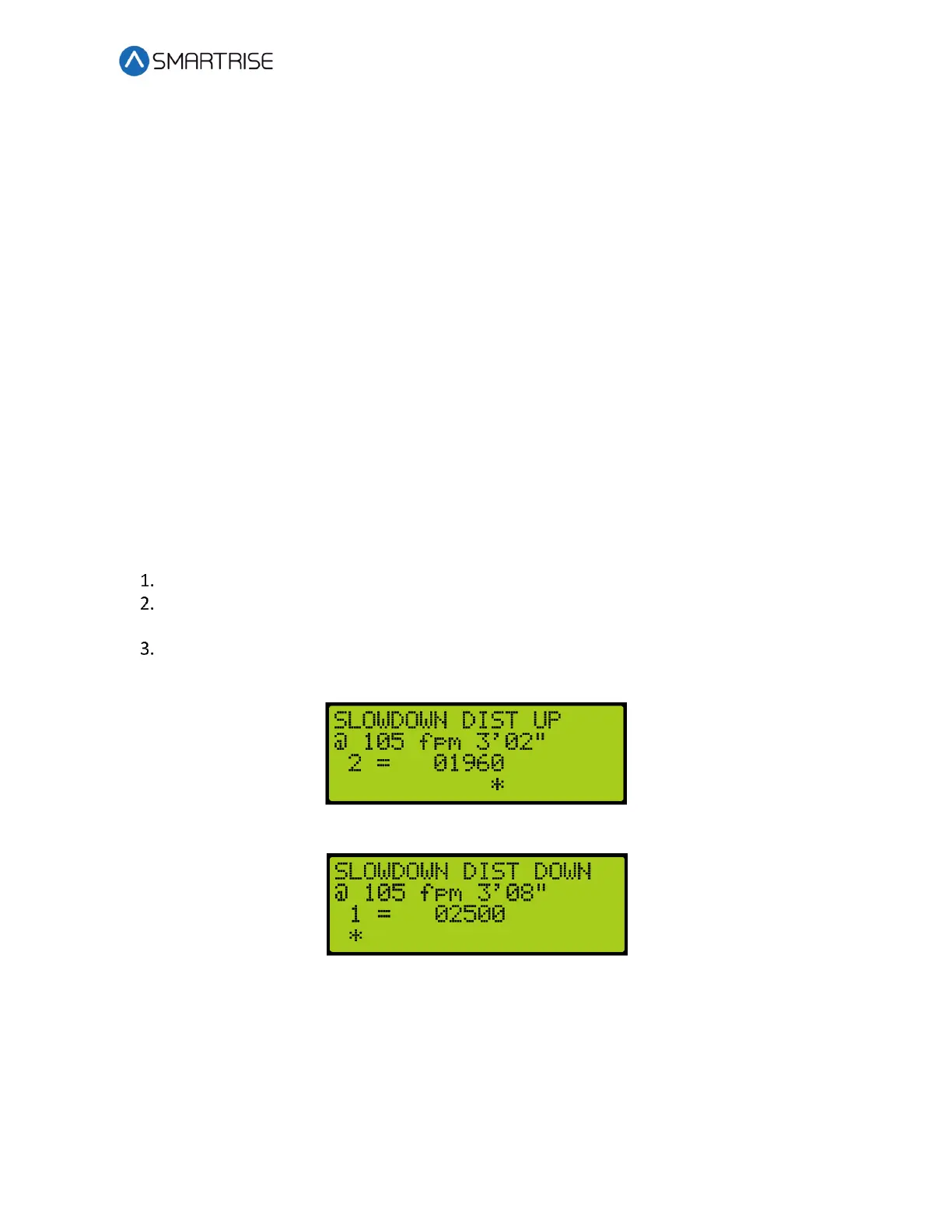Hydro:Evolved User Manual
October 2022 © 2022 Smartrise Engineering, Inc. All Rights Reserved Page 185
To verify the slowdown distance and speed of a car with a load, add a 500 pound load to the
car. Place a car call for one floor and a multi floor run in both directions. Observe if the car
overshoots and relevels or has a long leveling time. If the valves are not regulated, the
deceleration rate or the steady state of leveling are affected. The deceleration rate will increase
or the leveling speed will decrease as the weight of the car increases.
There are three conditions which can occur while adding weights:
• If the car overshoots, increase the slowdown distance.
• If the leveling time is too long, decrease the slowdown distance. I
• If the valves are not regulated and leveling time is longer, do not change the slowdown
distance.
DO NOT generate the threshold and distance after fine tuning the slowdown distance. This will
override the fine tuning values and generate new slowdowns depending on the factor in the
up/down adjustments.
For fine tuning the slow down distance, observe what is the maximum speed of the car before it
starts slowing down.
The following procedure describes how to view maximum speed of the car.
Navigate to MAIN MENU | SETUP | HYDRO. See Figure 60.
From the HYDRO SETUP menu, scroll and select Slowdown Distance UP or DOWN. See
Figure 317.
Due to multiple speed thresholds and slowdown distances, select the slowdown
distance for the speed the car is running at.
Figure 336: View Slowdown Distance Up
Figure 337:View Slowdown Distance Down
If adjusting the car for a different threshold with weights added and the car is overshooting or
the leveling time is greater than the empty car, increase or decrease the slowdown distance.
There are seven speed thresholds and slowdown distances. Select the correct speed threshold
to adjust so the speed of the car matches high speed.
